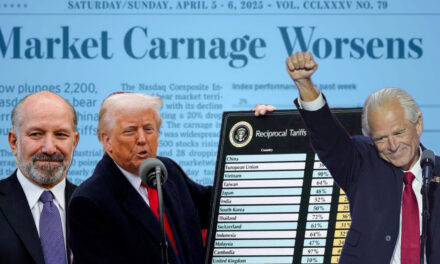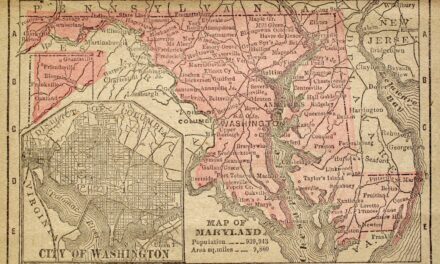Caesar in California
A domestic deployment in California could mark the moment the military ceases to serve the Constitution—and begins serving the man.
|
Support The Washington Spectator today Donate
|
A domestic deployment in California could mark the moment the military ceases to serve the Constitution—and begins serving the man.

by Jonathan Winer

by Larry Beinhart

by Robert Rudney

by Robert Alvarez

by Dave Troy


by Dave Troy


by David Cortright


by Mark Green

by Dave Troy

by Dave Troy


by Carne Ross

by Dave Troy
Special Issue
by Wayne Karlin
We would take a 6-by truck into An Tan from Ky Ha, to buy soda or beer or sex. A line of little thatched-roof kiosks, some of them walled with flattened beer cans from our trash dumps, strung along a dirt road rutted with...
In my novel In Country (1985), Samantha Hughes is preoccupied with Vietnam. Her father had been killed in the war just before she was born. Now 17, she is filled with questions about what it was like over there. Her eccentric...
My life is framed by war. My Marine father was killed in action on the beachhead of Guam, on July 22, 1944, while he was attempting to get his platoon dug in for the defense of a hill. Visibility was poor, and the enemy launched...
At this point there is no doubt as to whether we are having an authoritarian moment. We are — but...
by WS Editors
Media Notes The saga of the Epstein Files has resurfaced this week with the pronouncement from...
June 23, 2025 To the Editor: White House claims about the supposed success of US bombing in Iran...
by Randy Fertel
GUEST ESSAY Americans from all corners of the country are speaking out against the venality and...
There have been five major tax cuts since the income tax was established in 1916. When this new...
Listen to “Paranoia on Parade”, a 3-part audio podcast with commentary from author Dave Troy, Jack Bryan, director of the 2018 film “Active Measures,” and Hamilton Fish, Editor of The Washington Spectator.
To the Editor:
White House claims about the supposed success of US bombing in Iran are highly uncertain, but there is no doubt that unprovoked US and Israeli military strikes against Iran are a direct violation of international law. Article 2, (4) of the UN Charter prohibits states from using military force against other states without the approval of the Security Council, except for self-defense. States may use force to defend themselves when they are under attack by an aggressor, as Ukraine is doing, but that is not the case in this instance. Israel was not under attack when it began military action nearly two weeks ago. Iran did not use force first or threaten to do so.
To the editor,
Few, even among his detractors, will deny that Jimmy Carter was a man of consummate good character and personal integrity — before, during, and after he was president. He was indeed just that, even though opinions will differ significantly over his presidency — the many encomia at the time of his death notwithstanding.
Given his passing, I relistened to President Carter’s most famous speech, delivered on July 15, 1979. [...]

May 16, 2024
To the Editor:
It's a noble effort to make such a distinction, but to the people, fascism and patriotism are just buzzwords. The electorate speaks in kitchen-table issues and simple narratives, not political jargon- which holds no weight to them. Public distrust and discontent has eroded everything from their belief in government to the power of words. If Trump gets called a fascist, it won't mean anything to the ones who say they want better gas prices and who think Biden is just as bad as him. It's all just a bunch of loud noise to them, and luckily for them, they were born deaf to the dying gasps of the country that gave them shelter and sustenance.[...]
January 19, 2024
To the Editor:
This great article on concrete steps to avoid unconventional threats to a valid and trusted election in 2024 is extremely important. This article is the only effort I know of that warns and prepares us for the unexpected but possible coup against American democracy.
Dick Gephardt, former Majority Leader, US House of Representatives, currently working with Save our Republic, a bi-partisan effort to defend democracy.
January 9, 2024
To the Editor:
Amazing piece of legal and Constitutional analysis. Extremely lucid explanations of complex hypothetical election scenarios. Well done Medish and McCleary! There is, as you show, ample room for bad faith to upend our democracy. We are left trembling.
March 9, 2023
To the Editor:
Holtec International, the firm responsible for decommissioning the Indian Point nuclear power plant, has stated that it will resume discharging radioactive wastewater into the Hudson River as early as August, and possibly sooner.
New legislation introduced by Senator Harckham and Assemblymember Levenberg, with the support of a growing list of co-sponsors, will put a stop to any radioactive discharges into the Hudson River. We need to make this bill a law before Holtec resumes the release of radioactive waste from Indian Point into the Hudson River. Legislators need to hear from you - click here to tell our representatives you support this important bill. [...]
To the Editor:
Re: Justice Thomas Should Take a Long Look in the Mirror, by Jesse Wegman, New York Times, May 15, 2022
Looking into the mirror won’t help Clarence Thomas. He is a hopeless Uncle Tom, a stooge for white conservatives and a hypocrite. The depths of his hypocrisy can be seen when one considers that he grew up in segregated Pinpoint, Georgia at a time when Georgia crackers did all they could to suppress and dehumanize black folk. However, he was fortunate to come along in an era when black civil rights pioneers had paved the way for more open minority college admissions[...]
To the editor,
After Vladimir Putin seized the Crimea in 2014, he tried to shift blame for its woes on to Ukraine. He made the case that, by virtue of long occupation—Crimea was taken from the Ottomans in 1783 by Catharine the Great and defended by Nicholas the First in the Crimean War—the temperate peninsula was as Russian as Tolstoy or Red Square. [...]

To the Editor,
The House Select Committee on the January 6th attack on the Capitol was formed on July 1, 2021, almost 6 months after the insurrection took place. The DOJ and Attorney General Merrick Garland began their investigations much earlier, yet we are still waiting to learn if the instigators and planners of the attack will be charged and indicted and, just as important, that the events preceding the election and subsequent to it, amounting to federal offenses (interfering with election-results), are also investigated by the DOJ. [...]
To the Editor,
I recently read the article "Changes in the Electorate Signal Close Florida Race" by Karen Houppert. She repeatedly used the term "Latinx" to, I assume, describe people of Latin American heritage. I understand that she wants to be as "woke" as possible, but to use a meaningless word is unacceptable. The proper English word is Latin or Latin American. Spanish is a gender based language (as are all romance languages), so if you are going to use the language then use it properly. My wife is a Venezuelan-American and can't stand how "woke" people abuse her native language.
Frederick Dennstedt
Flagstaff, AZ
To the Editor,
This afternoon I've been listening to the impeachment trial with tears in my eyes for several reasons. The first is because of the thorough and deeply researched history lesson that the Democratic House managers are providing in the proceedings. It is not fine oratory but it is compelling and you can hear the passion in their voices. What an example for our offspring, in place of the pathetic administration currently in power. [...]
To the Editor,
I am not sure why Steve Pressman wrote, and you published, such a lame set of arguments against a wealth tax (Sept. 1st issue, page 6). The article claims "Perhaps the biggest negative is that the wealth tax does not have a very distinguished history." The main historical fact reported is that some wealth taxes were repealed, or reduced, or were unpopular as evidenced by their decline. So what? [...]

Pressman responds:
First, and maybe most important, property taxes are not wealth taxes. The property tax is a tax on the assessed value of a home and the land it sits on. It is not a tax on the equity that one has in one's home, which would make it a wealth tax. The same property tax applies to someone underwater on their mortgage and someone who owns their home outright -- when the two homes are of equal value in the same neighborhood. Rather than a tax on the wealthy, property taxes fall primarily on the middle class. [...]

“A great and powerful and timely film” – Ken Burns
Critics are raving about BAD FAITH, the sensational expose of Christian Nationalism from directors Stephen Ujlaki and Chris Jones
“One of the Ten Best Films of 2024” – Variety
The Wide Angle: Peter Thiel and the American Apocalypse
By Dave Troy
The Wide Angle: “Project Russia,” Unknown in the West, Reveals Putin’s Playbook
By Dave Troy
What Does Putin Have on Trump?
By Bob Dreyfuss
The Wide Angle: Stop Musk Now Or Face Certain Collapse
By Dave Troy
By Anne Nelson
